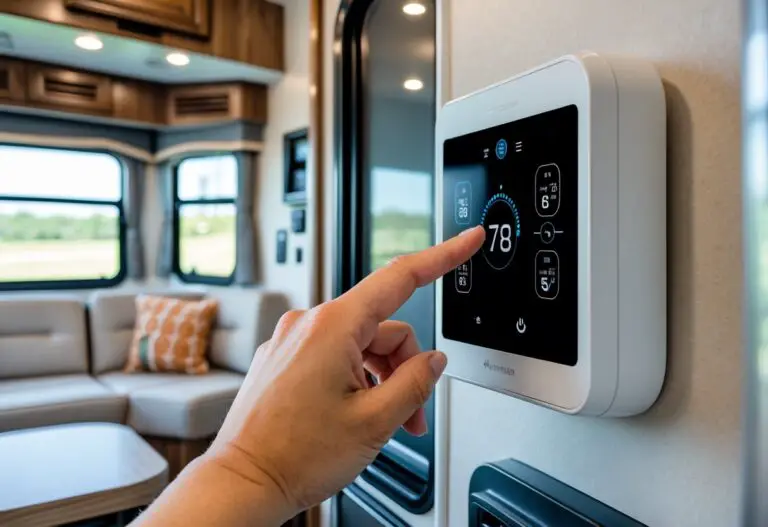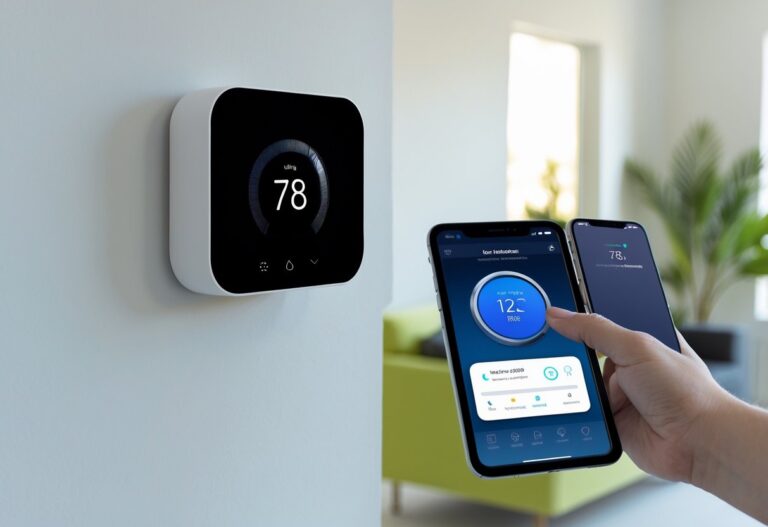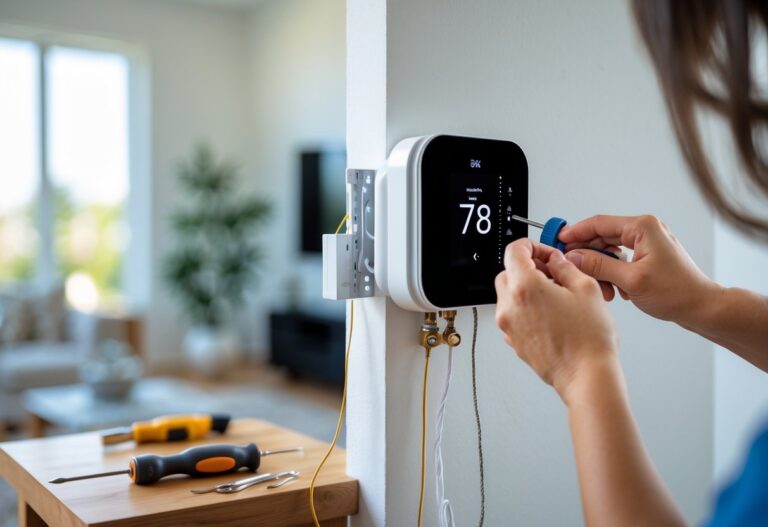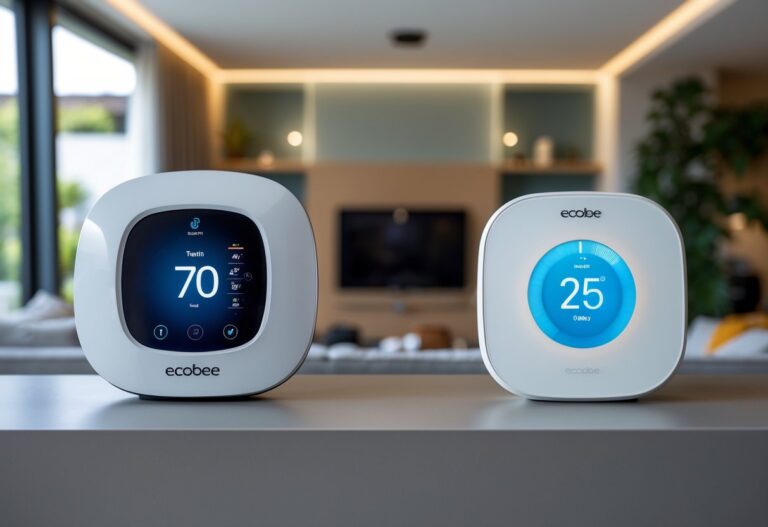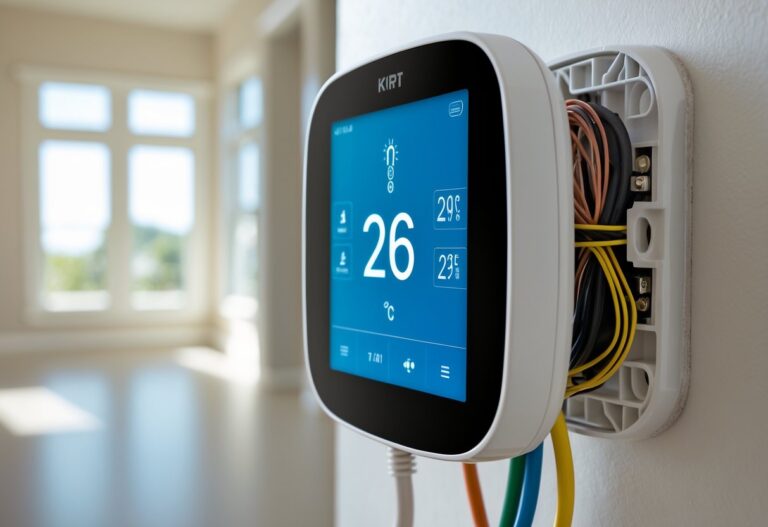If you’re looking to upgrade your home’s climate control and save energy, you might wonder if smart thermostats are a good match for heat pumps. Most smart thermostats do work with heat pumps, giving you better control and helping lower your bills. With the promise of easy programming and remote access, it’s clear why more people are connecting these systems.
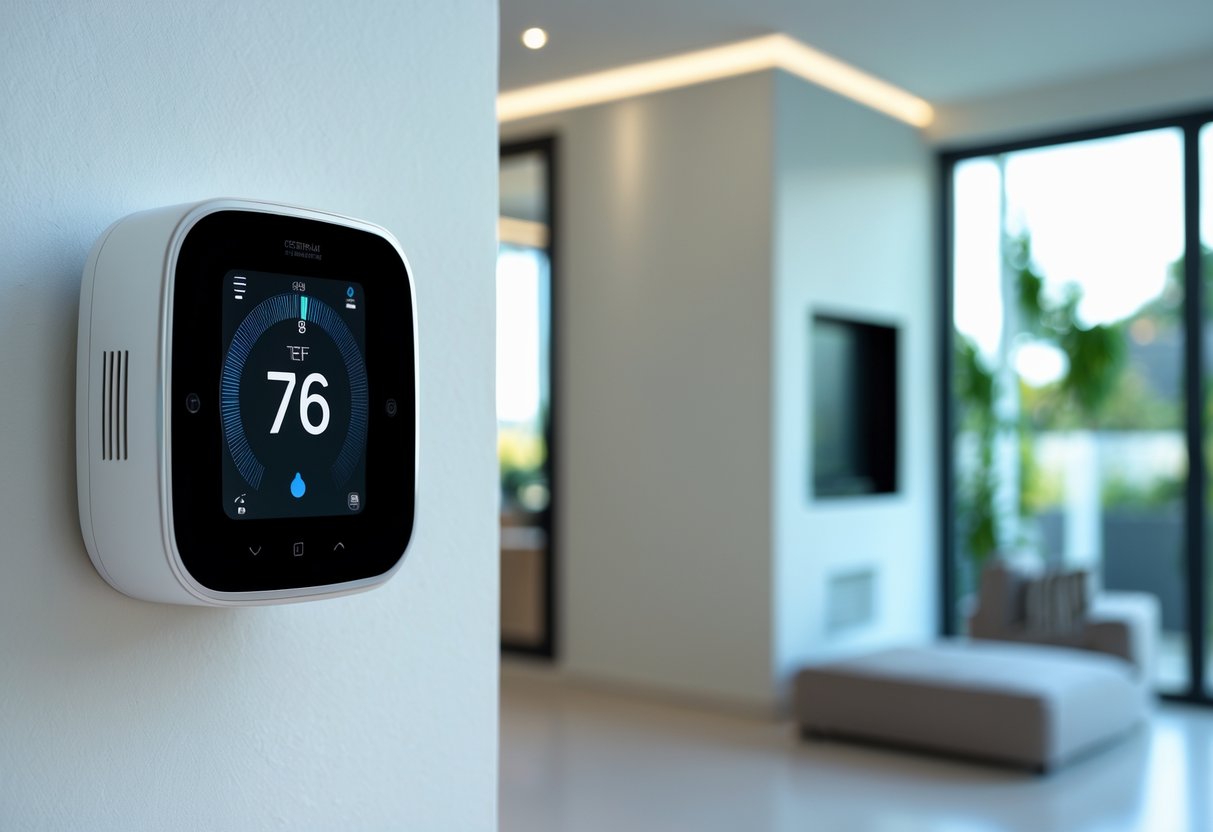
Choosing the right smart thermostat for your heat pump isn’t always simple, though. Compatibility, features, and installation steps can all affect your setup. Knowing what to look for will help you get the most out of your heating and cooling system.
Key Takeaways
- Smart thermostats work with most heat pumps.
- Compatibility and setup details matter.
- Benefits include easier control and greater energy savings.
How Smart Thermostats and Heat Pumps Work Together
Smart thermostats and heat pumps each bring unique technology to your home. When combined, they help manage temperature, save energy, and improve comfort.
Heat Pump Functionality Explained
A heat pump is a type of HVAC system that moves heat from one place to another. In winter, it pulls heat from the outside air and brings it inside. In summer, it takes heat from indoors and pushes it outside, working like an air conditioner.
Most heat pumps have a reversing valve that switches between heating and cooling modes. Some also have auxiliary or emergency heat for very cold days. The system often relies on separate wiring for the compressor, reversing valve, blower fan, and backup heat.
You might see color-coded wires such as Y (compressor), O/B (reversing valve), G (fan), R (power), and W (auxiliary heat). Together, these let your heat pump adjust to changing weather and maintain steady indoor temperatures.
Smart Thermostat Operation with Heat Pumps
A smart thermostat connects to your HVAC system and lets you control your heat pump from a phone, tablet, or voice assistant. It replaces manual temperature changes with automatic and remote adjustments.
Many smart thermostats learn your habits and use sensors to detect when you’re home, away, or asleep. They adjust the heat pump’s schedule to match, helping cut energy waste. Smart thermostats can also manage the heat pump’s special features, like switching between heating and cooling, triggering auxiliary heat, or handling multi-stage systems.
You get features such as detailed usage reports, maintenance reminders, and easy scheduling. Some models support integration with smart home platforms like Alexa, Google Assistant, or Apple HomeKit. Compatibility with your heat pump’s wiring and modes is key, so always check if your thermostat supports the specific functions of your system.
Compatibility Requirements and Installation Considerations
Setting up a smart thermostat with a heat pump system means paying close attention to wiring, voltage, and the heating and cooling stages your system supports. These factors affect whether your new device will work correctly and operate safely in your home.
Wiring Needs and the Importance of a C-Wire
Most smart thermostats for heat pumps need a constant power source. This usually comes from a common wire called a C-wire. The C-wire provides steady 24V power to keep your thermostat connected to Wi-Fi and running smart features.
If your current thermostat does not have a C-wire, you may need to install one or use a C-wire adapter that some brands provide. Older HVAC systems are less likely to have a C-wire, while newer setups often do.
Typical wiring for a heat pump smart thermostat:
| Terminal | Wire Color | Function |
|---|---|---|
| R | Red | Power |
| C | Blue/Black | Common wire (24V power) |
| Y | Yellow | Compressor (heating and cooling) |
| O/B | Orange | Reversing valve for heat/cool mode |
| G | Green | Fan |
| W/AUX | White | Auxiliary or emergency heating |
Using a C-wire ensures your smart thermostat works well with both heating and cooling cycles in all seasons. It also helps avoid system crashes or Wi-Fi dropouts that can happen without steady power.
Voltage and System Compatibility Issues
Smart thermostats designed for heat pumps almost always require low-voltage (24V) HVAC systems. Most residential heat pumps fall into this category. Some thermostats are not compatible with high-voltage systems (120V-240V), which are more common in baseboard heaters and older electric systems.
Before buying a smart thermostat, check your heat pump’s voltage type. You can usually find this information in your owner’s manual or right on the HVAC control panel.
Some systems, especially those with advanced features, can have extra wires or different labeling. Always match your wires to the thermostat’s terminal guide. If you have a 24V system but are missing some required wires, consult an HVAC professional.
Several popular heat pump thermostats, such as Ecobee, Nest, Honeywell, Sensi Touch, and Amazon Smart Thermostat clearly list which voltage ranges and system types they support. Review their specs, and double-check for notes on compatibility with your particular brand and model.
Single-Stage vs. Multi-Stage Heat Pumps
Heat pumps can be single-stage or multi-stage. Single-stage heat pumps provide one level of heating and one level of cooling. They are the most common and usually have simpler wiring. Most smart thermostats support these systems.
Multi-stage heat pumps offer two or more levels of heating and/or cooling, which helps your system run more efficiently and maintain steadier temperatures. If you have a multi-stage heat pump, you’ll need a smart thermostat that can control each stage separately.
Look for thermostats that specifically mention compatibility with multi-stage systems. Your system’s wiring will typically include extra terminals or wires (like Y2 or W2 for second-stage cooling or heating).
A multi-stage-capable thermostat ensures your heat pump switches stages automatically, giving you the right balance of comfort and energy savings. Not all smart thermostats can handle multi-stage systems, so always review the product documentation before buying.
Benefits of Smart Thermostats with Heat Pumps
Using a smart thermostat with a heat pump can help you control your home’s temperature, lower your energy use, and track how efficiently your system runs. These features can make your home more comfortable and let you see where you can save energy and money.
Energy Savings and Reduced Energy Consumption
Smart thermostats help manage when and how your heat pump uses energy. You can program a schedule or let the thermostat learn your habits, cutting down energy use when you’re away or asleep.
Features like geofencing let some smart thermostats know when you leave the house and adjust the temperature automatically. This cuts down on waste and lowers your electricity bill.
Some smart thermostats also suggest settings to help you save more. By avoiding running the heat pump when it’s not needed, you make your system more efficient. These changes add up over the months, leading to clear savings on energy costs.
Improved Comfort and Automated Climate Control
With a smart thermostat, your heat pump can keep your home at the exact temperature you want. You can use your phone or voice to change settings without walking to the thermostat.
Most smart thermostats offer zone control and custom schedules for each day. This means you get the right temperature in every room, at any time.
These devices also sense changes in temperature quickly. If the weather shifts or more people are in the house, the smart thermostat can react faster than standard options. This keeps your comfort steady and avoids big swings in temperature.
Tracking and Monitoring Energy Efficiency
Smart thermostats give you reports and charts that show how much energy your heat pump uses. You can check your daily, weekly, or monthly energy use right from your phone or computer.
These insights can help you spot problems, like if your heat pump runs too much or if settings are not right for your schedule. Some thermostats even alert you to system faults or suggest ways to improve efficiency.
By tracking your energy use, you have more control over your home’s efficiency. You can adjust your habits and settings based on real data, not just guesses. This helps you make informed choices for saving energy and money.
